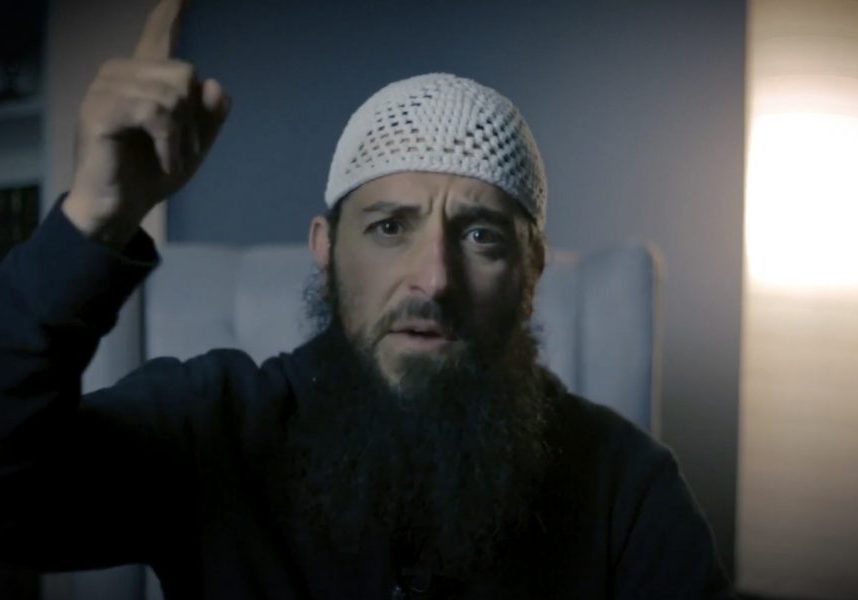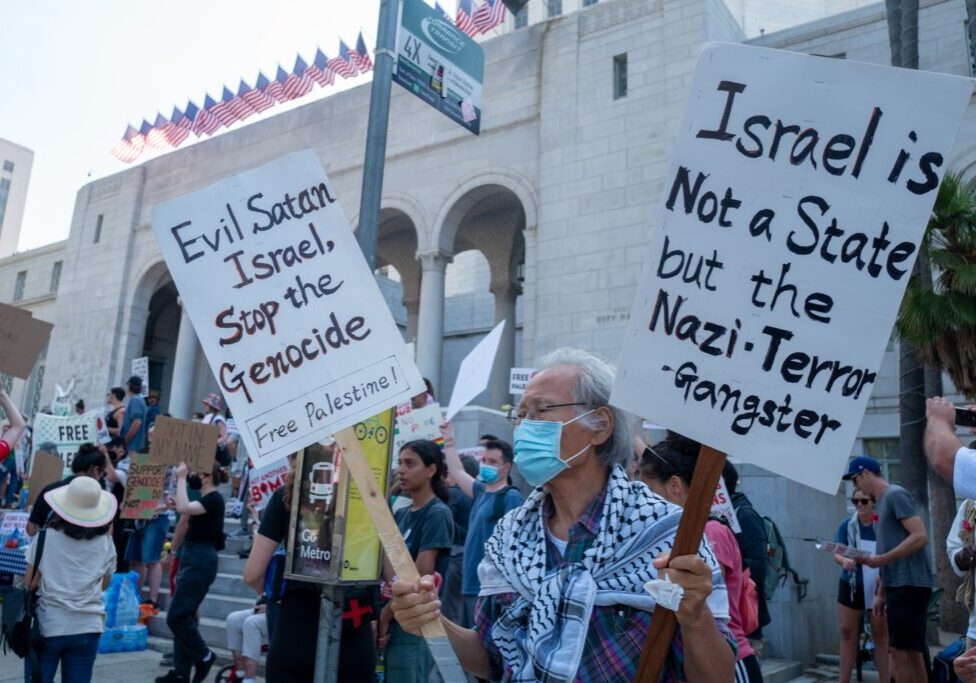Australia/Israel Review
The Biblio File: Suicide by Bomb
Aug 30, 2011 | Max Boot

Max Boot
Cutting the Fuse: The Explosion of Global Suicide Terrorism and How to Stop It
Robert Anthony Pape & James K. Feldman, University of Chicago Press, 2010, 349 pp., US$30.00
Ah, social science. All those numbers. All those technical terms. How comforting. How reassuring.
How definitive.
If only.
Case in point: Robert A. Pape, a political scientist at the University of Chicago, who made a big splash with Dying to Win: The Strategic Logic of Suicide Terrorism (2005). He began with a sweeping claim to scientific certitude, informing readers, “I have compiled a database of every suicide bombing and attack around the globe from 1980 through 2003 – 315 attacks in all.” And what did all those numbers prove? That “there is little connection between suicide terrorism and Islamic fundamentalism… Rather what nearly all suicide terrorist attacks have in common is a specific secular and strategic goal: to compel modern democracies to withdraw military forces from territory that the terrorists consider to be their homeland.”
His premises validated to his own satisfaction, Professor Pape then segued into what (to him) was surely an unassailable conclusion: “that the sustained presence of heavy American combat forces in Muslim countries is likely to increase the odds of the next 9/11.” Rather than embrace “any strategy centring on the transformation of Muslim societies,” he lectured policymakers, “We need to recall the virtues of our traditional policy of ‘offshore balancing’ in the Persian Gulf and return to that strategy.” In other words, withdraw our troops from the countries where they have been stationed – countries such as Bahrain, Kuwait, Iraq, Qatar, Saudi Arabia, and the United Arab Emirates – in order to “find a lasting solution to suicide terrorism that does not compromise our core interest in maintaining access to one of the world’s key oil-producing regions.”
Dying to Win was such a big succès d’estime that Pape has followed up with a second book – this one co-authored by James Feldman, a professor at the Air Force Institute of Technology – which restates the thesis of the earlier work and extends the research up to 2009. Cutting the Fuse comes with even greater trappings of social science than its predecessor. The very first page announces that the research was generated by something called the Chicago Project on Security and Terrorism, which of course has its own acronym (CPOST) as well as a long list of financial backers: “Over several years, funding for these efforts was provided by the University of Chicago Division of the Social Sciences, the US Department of Defence (the Defence Threat Reduction Agency and the Office of Naval Research), Argonne National Laboratory and the Carnegie Corporation of New York.” An impressive list, which only makes one wonder at the absence of the Ford and MacArthur Foundations and one or two other blue-chip endowments.
The authors then thank a long list of “exceptional young professionals” for (you can almost hear the back-slapping) going “the extra mile to ensure the high standards required for the CPOST database development, campaign research, and analysis.” Nor is that all.
Pape and Feldman claim that “this book is not written from a specific worldview, ideological orientation, or Democratic or Republican program.” Rather it is motivated solely by the “assumption that dispassionate consideration of the facts can create consensus and hope for a new future in American foreign policy.” Unlike the rest of us, Pape and Feldman are totally devoid of any worldview or orientation; they are simply servants of “The Truth” as determined by the “Scientific Method”.
This conceit is undermined a bit by the fact that the acknowledgments contain a glowing tribute to John Mearsheimer, who “inspired Bob Pape to pursue a career in social science to better the world, and continues to challenge him to do so.” That would be the same John Mearsheimer who, along with Stephen Walt, authored that notorious anti-Israel – bordering on antisemitic – tract known as The Israel Lobby, which accused pro-Israel Americans of being Fifth Columnists. While Pape’s books are not nearly as egregious as his mentor’s, he does share with Mearsheimer a proclivity for disguising inflammatory political arguments behind a thin patina of social science which breaks down upon the slightest critical examination.
Start with Pape’s most fundamental claim: that suicide bombers are not the product of Islamic ideology but rather are frustrated nationalists who emerge “from communities resisting foreign military occupation.” If this were the case, it would be hard to figure out why suicide bombing only became a common terrorist tactic in the early 1980s. Why wasn’t it used before by nationalists in Vietnam, Algeria, or other colonial battlefields?
What Pape’s narrative glosses over is the fact that suicide bombing in the modern context was first employed by Hezbollah and its immediate precursors in Lebanon. The very first suicide attack in Lebanon occurred in 1981; the target was the embassy of Iraq, a country that, to the best of my knowledge, was not occupying Lebanon at the time. Perhaps for this reason the attack goes unmentioned in Pape’s database, which lists only attacks by Hezbollah committed on the US, Israeli, French, and Lebanese armies. The next major attack occurred in 1982. The target was an Israeli military headquarters in Tyre. The fact that Israel was occupying part of Lebanon at the time gives superficial support to Pape’s analysis, but we must still ask why Hezbollah resorted to suicide attacks while other terrorist and guerrilla groups also resisting Israeli occupation – for example, the Palestine Liberation Organisation prior to the 1990s – did not.
Surely the answer is that Hezbollah was (and is) a fanatical Shi’ite movement that was inspired by the Iranian revolution, which itself became known for the use of suicidal tactics. During the Iran-Iraq war, tens of thousands of Iranian boys, some as young as 10, were sent to run through minefields in human-wave attacks. They were even given plastic keys to ensure their entry into heaven. Only a political science Ph.D. could doubt that it was religious zeal which inspired them to sacrifice their lives.
While suicide bombing started with Hezbollah, it soon spread to other organisations, including a few secular groups, such as the Tamil Tigers in Sri Lanka. Pape makes much of the Tigers’ record of suicide attacks to deny any Islamic orientation to this tactic. But by his own count the Tigers killed 1,501 people in suicide attacks over 21 years (1987-2008).
That works out to an average of 71 victims a year. The only other major campaign of suicide terrorism mounted by a secular group that Pape cites is the Kurdistan Workers Party (PKK), which killed all of 43 people in Turkey between 1996 and 2008. Contrast this with the far bloodier record of Islamic suicide bombers from Chechnya to Israel. Pape’s database reveals that, since 1981, Muslim groups (not counting the PKK) have accounted for 93.7 percent of all deaths caused by suicide bombers – 24,631 out of 26,277. This statistic isn’t cited in Pape and Feldman’s book, presumably because it is so at odds with their main argument.
The deadliest campaign of all occurred in Iraq, where suicide bombers murdered 10,655 people in just five years (2003-08). What could have motivated the killers who turned Iraq into a charnel house? If Pape’s logic were to be believed, they must have been Iraqi nationalists outraged by American occupation. But Pape’s own data show that only about a third of all suicide bombers in Iraq were actually Iraqis. The rest were Saudis, Kuwaitis, Syrians, Jordanians, Yemenis, and other foreigners. Surely they could have had no devotion to Iraq as a national entity. In most cases the first time they ever visited Iraq was on their way to self-immolation. The only conceivable reason they could have sacrificed themselves to slay others was because they saw this as a religious obligation.
Moreover, the vast majority of their victims were not Americans, Britons, or other “occupiers” but, rather, Iraqis: either members of the security forces or innocent bystanders. For many of the dead, their only crime was to be of the Shi’ite faith. Abu Musab al-Zarqawi, the Jordanian-born head of al-Qaeda in Iraq, nurtured a fanatical hatred of Shi’ites, whom he referred to as “crafty and malicious” scorpions, snakes, rats, and “devils in the bodies of men.” He saw it as a religious duty to kill these “apostates”.
Al-Qaeda in Iraq and more secular Sunni insurgents also targeted American troops, but this was mostly by employing improvised explosive devices (IEDs), not suicide bombs. (Shi’ite insurgents preferred to use rockets and mortars.) In other words, those who fought the US military most directly did so by employing non-suicidal tactics. It was only fanatical Salafists who were willing to blow themselves up to make a point, and most of their victims were co-religionists.
This is rather damaging to Pape’s thesis. So is the fact that the suicide bombers in Iraq were not defeated by his preferred strategy of offshore balancing. If taken seriously in the Iraqi context, that would have required a withdrawal of US troops in the face of vicious attacks. One might even argue that, prior to 2007, Generals George Casey and John Abizaid were pursuing a “Papist” approach by trying to move US troops out of population centres. The result, as we know, was more carnage, not less. The suicide bombing threat in Iraq, along with the threat from other types of terrorist tactics (which Pape and Feldman utterly and mysteriously ignore) was reduced more than 90 percent by the application of time-tested counterinsurgency principles. The solution involved not a reduction of US forces (as Pape would advocate) but, rather, an increase in their numbers and a change in their tactics to move into the middle of population centres, thus presumably heightening Iraqis’ sense of being “occupied” which, in the Pape worldview, is the root of all evil.
Israel is another case that resists the pigeonholes into which Pape tries to stuff it. In the first place, Pape and Feldman cite the al-Aqsa Martyrs’ Brigade as evidence that suicide bombing is a secular, not an Islamic, phenomenon; but while the al-Aqsa Martyrs’ Brigade was set up by Fatah, a secular nationalist organisation, it was explicitly religious in orientation. It was named, after all, in honour of the al-Aqsa mosque. This was Yasser Arafat’s attempt to co-opt the religious extremism that was being harnessed by Fatah’s rivals in Hamas and the Palestinian Islamic Jihad; the al-Aqsa Martyrs’ Brigade’s adoption of suicide bombing was very much influenced by their example.
A second error that Pape and Feldman commit is to claim that the Second (or al-Aqsa) Intifada was ended by “Israel’s withdrawal from Gaza and part of the West Bank.” Actually it was more nearly the opposite. Israel was able to defeat the suicide bombers because, in April 2002, Prime Minister Ariel Sharon and the security cabinet made the decision to send the Israel Defence Forces into areas of the West Bank that had been ceded to Palestinian control under the Oslo Accords.
As part of Operation Defensive Shield, Israeli troops fought difficult battles in Jenin and other cities. They even besieged Yasser Arafat in his Ramallah compound. These operations were remarkably successful in uprooting terrorist cells that were sending suicide bombers into Israel proper. But those cells would have regenerated themselves if Israeli troops had simply pulled back – as has happened with Hamas and Hezbollah after Israeli troops pulled out of Gaza and southern Lebanon, respectively. Instead of retreating, however, Israeli soldiers and intelligence operatives have remained in the West Bank, and although their presence is less intrusive than it used to be, they still conduct raids every night to arrest suspects. They also actively share intelligence with Palestinian security forces – intelligence they would be hard-put to gather if they did not have a ground presence. The erection of the separation barrier between Israel proper and most of the West Bank also helped by impeding the movement of terrorists. But such a purely defensive response would have proved inadequate were it not for Israel’s continued willingness to stay on the offensive against the terrorists.
Having succeeded in quelling the threat from suicide bombers, the Israeli Government then decided to pull out of the Gaza Strip in 2005. Ariel Sharon would never have retreated under fire; so, contrary to Pape and Feldman’s claims, the Gaza disengagement was the result – not the cause – of Israel’s defeat of the suicide bombers of the Second Intifada.
What about Israel’s pullout from southern Lebanon in 2000? Wasn’t this proof of Pape’s thesis that only the end of military occupation can stop suicide bombing? Nope. Suicide bombing had ended long before Israel’s pullout. Hezbollah all but abandoned this tactic after the 1980s, carrying out only three suicide attacks after 1990. By the late 1990s it was strong enough to revert to traditional guerrilla warfare, including the use of IEDs similar to those that would later take a toll on US forces in Iraq and Afghanistan.
When the Israelis once again invaded Lebanon in 2006, Hezbollah did not respond with suicide attacks but with rockets aimed at Israel proper and with skilful guerrilla ambushes aimed at Israeli troops. If suicide bombing is the natural result of military occupation, as Pape seems to imagine, why did Hezbollah give up this tactic which it had practically invented? Surely it was not for lack of suicidal volunteers. Rather, it was because Hezbollah recognised that suicide bombing is not the super-weapon Pape imagines it to be. It is one tool in the terrorist’s arsenal, and not a particularly effective one at that – especially after its initial shock value has worn off.
If the experience of Iraq and Israel punctures holes in Pape’s leaky thesis, the case of Pakistan sinks it altogether. Since the decline of violence in Iraq, Pakistan has emerged as the biggest terrorist killing field in the world – more deadly, even, than Afghanistan. Pape’s own database shows 196 suicide attacks in Pakistan from 2006 to 2010, resulting in 2,622 deaths. But this is only a small part of the tragic tale of a country under sustained assault from vicious jihadist groups. According to the Pak Institute for Peace Studies, over 12,000 people were killed in terrorist attacks in Pakistan between 2006 and 2010. More are dying all the time.
How could this possibly be the case if, as Pape has it, foreign military occupation is needed to spur suicide bombers into action? I am not aware of any foreign army occupying Pakistan. Far from it; much of that country’s frontier region is unoccupied, even by Pakistan’s own army. But Pape is not daunted by a logical obstacle that would send lesser scholars scurrying back to the drawing board. Rather than concede that Pakistan is an exception to his all-encompassing thesis, he gamely tries to shoehorn it in by claiming that, in 2006, when suicide bombings began on a large scale, “the alliance between Pakistan and the United States evolved into – what is better termed – an indirect occupation.” Got it? Pakistan is occupied by the United States indirectly – so indirectly, in fact, that the occupation is not perceptible to anyone other than Robert Pape and James Feldman.
To justify this astonishing claim, they define “indirect occupation” as any instance where one country “dictates… strategic priorities” to another country. Since, they claim, “US pressure has shifted Pakistan’s strategic priorities” to turn against the militants, then Pakistan must be under US occupation. To which one can only reply: It would be nice if the United States actually had shifted Pakistan’s strategic priorities. But the fact that Pakistan continues to support terrorist groups such as the Haqqani Network and the Taliban which are killing American soldiers – not to mention the probability that elements of the Pakistan establishment winked at Osama bin Laden’s presence in a military garrison town – suggests otherwise.
Pape and Feldman’s problems with defining “military occupation” extend beyond Pakistan. To account for the fact that so many leading terrorists come from countries that haven’t been occupied by the United States (al-Qaeda’s longtime number-two, Ayman al-Zawahiri, for example, is a native of Egypt), they are compelled to claim that any US military presence is tantamount to “occupation”. Thus they offer a list of the following “Sunni countries with US combat operations”: not only Afghanistan and Iraq but also Saudi Arabia, Turkey, Uzbekistan, the United Arab Emirates, Oman, Kuwait, Yemen, Pakistan, and Jordan.
This only makes sense if you adopt the late Osama bin Laden’s definition of “occupation” to mean any infidel military presence in Muslim lands. Yet even this expansive definition hardly fits countries such as Libya, Egypt, Syria, Lebanon, and Morocco, which have given rise to numerous suicide bombers in spite of the total absence of American troops on their soil. Libya and Syria are not even American allies but, rather, our enemies: How could our “military occupation” be responsible for the creation of their terrorist groups?
Pape and Feldman respond that suicide bombers are being driven around the bend by “the implementation of US foreign policies aimed at controlling Muslim countries.” Again, this is to adopt Osama bin Laden’s perspective as reality. Is the United States actually trying to “control” Muslim countries? Isn’t it more accurate to say that we are helping to defend Muslim nations at their own invitation? By focusing so heavily on America’s supposed “occupations”, Pape and Feldman take a very narrow and selective view of terrorist motivations. They thereby ignore the dismal conditions in most of the Middle East, including the lack of political, social, and economic opportunity, which has a lot to do with the making of terrorists.
Most terrorist groups are primarily concerned with toppling homegrown regimes. Isn’t it possible, even likely, that fighting American “military occupation” is only an excuse or a means to an end – as shown by the fact that al-Qaeda did not end its attacks on the US after all of American troops were pulled out of Saudi Arabia? Alan Krueger, a distinguished economics professor at Princeton also studied “What Makes a Terrorist” – the title of a nifty little book he published in 2007. He concluded that the single most important risk factor was not poverty or occupation or anything else but rather “the suppression of civil liberties and political rights… When non-violent means of protest are curtailed, malcontents appear to be more likely to turn to terrorist tactics.” This explanation is not all-encompassing because some terrorists have arisen in countries such as Britain and France where civil liberties are not suppressed. But on the whole, Krueger’s explanation is a lot more convincing than Pape’s.
I do not mean to suggest that Pape’s work is entirely worthless. The online database of suicide bombings he and his team have assembled seems useful, if limited, insofar as it does not account for the vast majority of terrorist attacks which do not involve suicide bombers. The problem is that the analytic spin he puts on the data is unconvincing and misleading. Even worse, his policy prescription – a shift to a strategy of “offshore balancing” – is just plain dangerous. If the United States were to remove its forces from the Middle East, as he advocates, the result might very well be a short-run decrease in suicide bombings aimed at American personnel. But it would mean an increase in tyranny and violence because it would cede the political playing field to extremists, both Sunni and Shi’ite, from al-Qaeda to Iran’s Quds Force. In fact it was the very crumbling of the previous policy of “offshore balancing”, brought about by events such as the 1979 Iranian revolution, Iraq’s 1990 invasion of Kuwait, and al-Qaeda’s 9/11 attacks, that compelled greater American engagement in the Middle East.
Pape and Feldman are welcome to make the case for their preferred policies, but they should have the honesty to admit that there is nothing remotely objective about their views. Having read their polemical tome, one might even suspect that their policy prescriptions are the result of – gasp – a “specific worldview” and an “ideological orientation” rather than of a “dispassionate consideration of the facts.”
Max Boot is the Jeane J. Kirkpatrick senior fellow in national security studies at the Council on Foreign Relations. © Weekly Standard, reprinted by permission, all rights reserved.
Tags: Islamic Extremism






